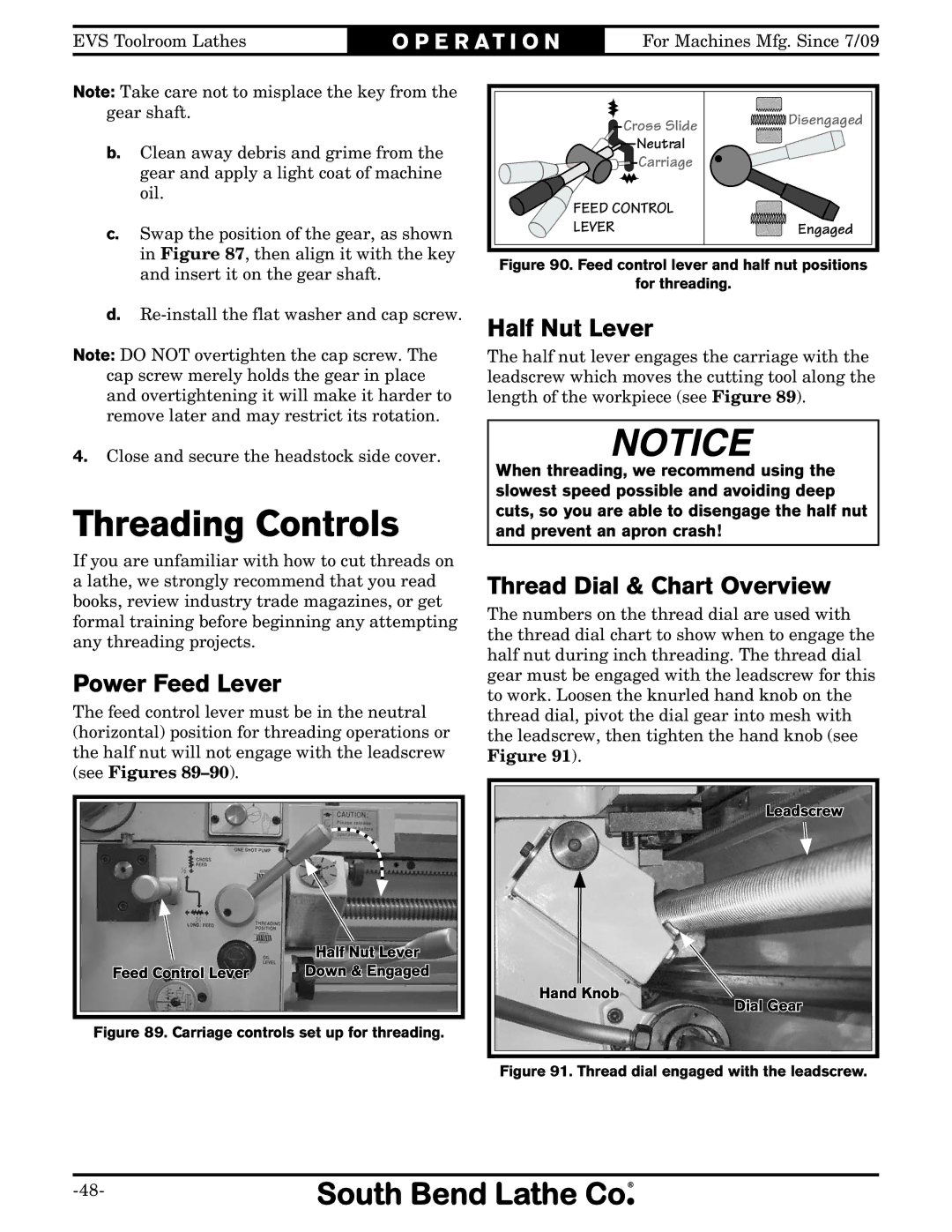
EVS Toolroom Lathes | O P E R A T I O N | For Machines Mfg. Since 7/09 |
Note: Take care not to misplace the key from the gear shaft.
b. | Clean away debris and grime from the |
| gear and apply a light coat of machine |
| oil. |
c. | Swap the position of the gear, as shown |
| in Figure 87, then align it with the key |
Cross Slide
![]()
![]() Neutral
Neutral
![]()
![]()
![]()
![]() Carriage
Carriage
FEED CONTROL
LEVER
![]()
![]()
![]()
![]()
![]()
![]()
![]()
![]()
![]()
![]()
![]() Disengaged
Disengaged
Engaged
and insert it on the gear shaft. |
d. |
Note: DO NOT overtighten the cap screw. The cap screw merely holds the gear in place and overtightening it will make it harder to remove later and may restrict its rotation.
4.Close and secure the headstock side cover.
Threading Controls
If you are unfamiliar with how to cut threads on a lathe, we strongly recommend that you read books, review industry trade magazines, or get formal training before beginning any attempting any threading projects.
Power Feed Lever
The feed control lever must be in the neutral (horizontal) position for threading operations or the half nut will not engage with the leadscrew (see Figures
| Half Nut Lever |
Feed Control Lever | Down & Engaged |
Figure 89. Carriage controls set up for threading.
Figure 90. Feed control lever and half nut positions
for threading.
Half Nut Lever
The half nut lever engages the carriage with the leadscrew which moves the cutting tool along the length of the workpiece (see Figure 89).
When threading, we recommend using the slowest speed possible and avoiding deep cuts, so you are able to disengage the half nut and prevent an apron crash!
Thread Dial & Chart Overview
The numbers on the thread dial are used with the thread dial chart to show when to engage the half nut during inch threading. The thread dial gear must be engaged with the leadscrew for this to work. Loosen the knurled hand knob on the thread dial, pivot the dial gear into mesh with the leadscrew, then tighten the hand knob (see Figure 91).
Leadscrew
H![]()
![]() and Knob
and Knob
Dial Gear
